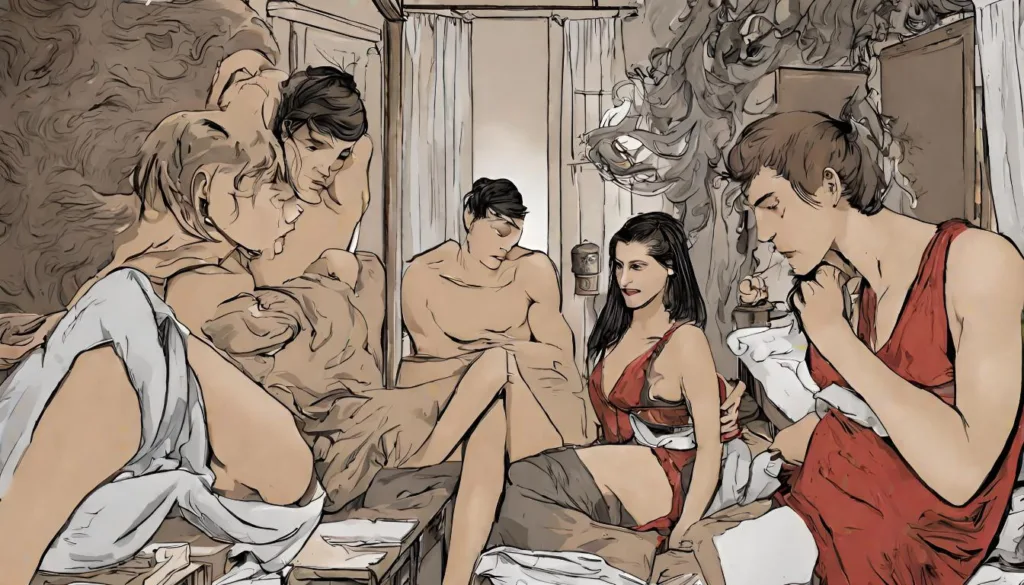How Sexual Desire Is Affected by Traditional Gender
Traditional gender norms still greatly impact how people behave in many different ways in the dynamic world of modern society. The effect of these positions on sexual desire is an interesting factor that merits further investigation. By taking into account the intricate interactions between societal norms, individual identities, and changing viewpoints on gender, this article seeks to investigate how traditional gender expectations impact and affect sexual desire in individuals.

The Background of Gender Roles in History:
It is crucial to look at the historical background that shaped traditional gender norms to understand the present. From prehistoric times to the present, cultures have frequently imposed expectations and roles on men and women. These positions involve intimate facets of human existence, such as relationships and sexuality, in addition to routine activities.
Sexual Desire and Socialization:
Socialization is one way that sexual desire is impacted by established gender norms. People are exposed to gender-specific social standards from an early age. These norms regulate how people should behave. Certain expectations and attitudes regarding intimacy and sex may develop as a result of this socialization.
Pressures and Expectations:
There are typically implicit sexual conduct standards associated with traditional gender norms. While women may face expectations of passivity and nurturing, men may experience pressure to live up to ideas of authority and assertiveness. These expectations can mold people’s aspirations and affect how they see themselves since they may push for behavior that conforms to social norms.
Power Structures in Partnerships:
The power dynamics in relationships also demonstrate how traditional gender norms impact sexual desire. Who plays what part in a partnership is frequently determined by societal expectations, which affect how people communicate, make decisions, and express their wishes. Fostering wholesome and fair relationships requires an understanding of these dynamics and the ability to challenge them.
Breaking the Pattern:
More people are becoming aware of and advocating for more inclusive and flexible gender identity manifestations, even while traditional gender roles continue to exist. People are questioning and redefining conventional conventions as society changes, making room for a wider variety of sexual displays of desire. This progression creates opportunities for increased authenticity and self-discovery.
Putting the Status Quo to the Test:
It is necessary to question and demolish the inflexible frameworks of traditional gender roles as modern society struggles with changing views on gender. Activities that support gender equality, education, and candid communication help dispel prejudices and provide a space where people feel free to be who they truly are. With people being able to explore and express their desires without being constrained by antiquated preconceptions, this change has the potential to completely change the landscape of sexual desire.

Diverse experiences and intersectionality:
Understanding that the influence of gender norms on sexual desire varies depending on cultural, societal, and personal factors is crucial. Intersectionality is a concept that highlights how many social identities, including socioeconomic class, race, ethnicity, and sexual orientation, are intertwined. Understanding the complex ways in which traditional gender norms impact people’s sexual experiences requires an acknowledgment of these intersecting influences.
Sexual Empowerment and Education:
A comprehensive approach to sexual education is necessary to address the ways that traditional gender norms affect sexual desire. Promoting consciousness, inclusion, and consent can help people gain a better understanding of their preferences and wishes. Promoting a sense of agency and autonomy in sexual empowerment entails enabling people to make knowledgeable decisions.
READ MORE for health benefits
Prospects & Future Courses:
There are great prospects for a more tolerant and inclusive view of sexual desire in the future as society works to reframe and question established gender norms. People can feel free to explore and truly express their wants in a place that is created by accepting variations in gender manifestations and demolishing preconceptions. Furthermore, promoting candid discussions about sexuality in partnerships and communities can help lower barriers and lessen the stigma associated with a range of sexual manifestations.
In summary:
Examining how conventional gender roles affect sexual desire in modern culture reveals a complicated relationship between personal identity, changing gender ideas, and societal expectations. Fostering a more inclusive and understanding society requires knowledge of the impact of historical norms and power dynamics within interactions. The panorama of sexual desire is changing as people continue to question and reinvent old gender norms.
Q1: How do conventional gender norms affect sexual desire and what are they?
A1: Conventional gender roles are social norms and expectations that assign particular traits, roles, and actions to people according to their gender. These roles have the power to influence sexual desire by influencing how people view themselves, set expectations for themselves, and behave in close relationships in a way that conforms to social standards.
Q2: How do power dynamics in partnerships affect how traditional gender norms affect a person’s desire for sexual activity?
A2: Communication, decision-making, and the expression of desires can all be impacted by power dynamics in partnerships, which are frequently shaped by established gender norms. People’s choices of dominating or submissive roles can be influenced by societal expectations, which can also have an impact on how people negotiate and express their sexual wants in partnerships.
Q3: Is there a way to favorably impact sexual desire by defying conventional gender roles?
A3: Questioning and defying conventional gender norms can indeed enhance sexual desire. When people question social conventions, they make room for more genuine manifestations of desire that aren’t constrained by stereotypes. This may result in richer and more varied personal relationship experiences.
Q4: How does the influence of established gender norms on sexual desire relate to intersectionality?
A4: Intersectionality acknowledges how different social identities—such as socioeconomic class, race, ethnicity, and sexual orientation—intersect and shape people’s lives. Traditional gender norms have a complex and variable effect on sexual desire in many circumstances. Understanding the distinctive ways these elements interact and influence personal experiences is made easier by taking intersectionality into account.
Q5: In the context of conventional gender norms, what actions may be made to encourage inclusivity and sexual empowerment?
A5: Developing understanding, inclusivity, and consent are essential components of promoting sexual empowerment. It’s important to challenge misconceptions, have an open discourse, and provide

Роль технического надзора на объекте строительства, как это работает.
Что учитывать при выборе технического надзора в строительстве, для успешной реализации проекта.
Как происходит процесс технического надзора на строительной площадке, для поддержания контроля.
Риски, связанные с отсутствием технического надзора, и способы их решения.
Как повысить эффективность технического надзора на строительном объекте, для достижения лучших результатов.
Методы технического надзора в строительстве, для обеспечения высокого качества работ.
Строительный контроль в процессе строительства http://stroitelny-nadzor.ru/ .